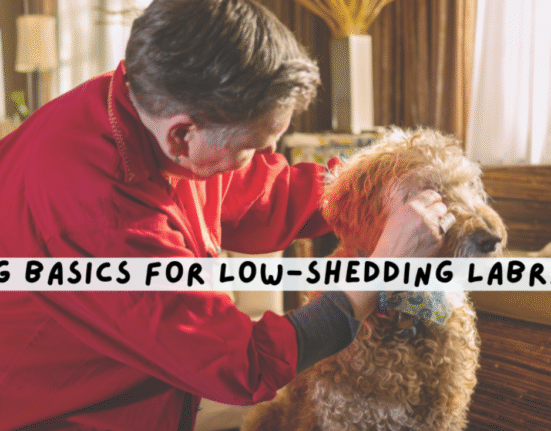Picture this: a nurse who spends her evenings washing scrubs after a long shift. A delivery driver is scrubbing grease out of overalls. A shop assistant is ironing their branded polo shirt the next day.
What many employees may not know is that HMRC actually allows them to claim tax relief for the costs of maintaining a work uniform. It’s called the uniform tax rebate—and every year, millions of pounds go unclaimed.
If you wear a uniform at work and have been covering laundry expenses yourself, you could be entitled to money back. Let’s break down what uniform tax relief really means, how much you could get, and how to claim it.
What Is the Uniform Tax Rebate?
In simple terms, the uniform tax rebate is a way of claiming back some of the money you’ve spent washing, repairing, or replacing your work clothing.
- Uniform tax is the broad concept of tax relief for work clothing.
- A uniform tax rebate or refund is the actual money HMRC pays back if you’ve overpaid in previous tax years.
This relief is designed for employees who must wear a uniform or protective clothing as part of their job. It doesn’t apply to everyday wear—even if your employer requires a “smart dress code.”
Think of it as compensation for the hidden costs of keeping your work clothes clean and presentable.
Who Can Claim Uniform Tax Relief?
Not everyone qualifies, but thousands of jobs do. You can claim if:
- You are required to wear a uniform or protective clothing at work.
- You wash, repair, or replace it yourself (not covered by your employer).
- You pay income tax as a basic or higher rate taxpayer.
Some common roles include:
- Healthcare staff – nurses, ambulance staff, carers.
- Retail and hospitality workers – supermarket staff, waiters, baristas.
- Manual and trade workers – mechanics, engineers, builders.
- Transport roles – delivery drivers, road staff, pilots.
The rule of thumb: if the clothing is branded, protective, or only suitable for work, it counts.
How Much Can You Get Back?
This is where things get interesting. HMRC sets a Flat Rate Expense (FRE) for many jobs.
- The standard allowance is £60 per year, which gives basic rate taxpayers £12 back annually.
- Higher rate taxpayers (40%) get £24 per year.
- Some industries have larger allowances—for example, ambulance staff and mechanics may claim over £120 a year.
The best part? You can backdate claims up to 4 previous tax years. That means if you’ve never claimed before, you could receive a refund worth £48–£100+ in one go.
How to Claim a Uniform Tax Rebate Step-by-Step
The process is simpler than it sounds:
- Check eligibility – confirm your role requires a uniform and you pay for its upkeep.
- Choose how to claim:
- If you don’t usually file tax returns, complete a P87 form (online or by post).
- If you have already filed a self-assessment tax return, include your uniform expenses there.
- Provide details – job title, employer, type of uniform, tax year(s).
- Submit to HMRC.
How long does a uniform tax rebate take? Typically, 8–12 weeks, though many people receive their refund sooner.
| Pro tip: You don’t need receipts for flat rate claims, but keep records if you want to claim actual costs. |
Real-Life Example
Take Sarah, a supermarket worker. She’s been with Tesco for 6 years, washing her branded uniform at home every week. She only discovered the uniform tax rebate when a colleague mentioned it.
By submitting a simple P87 form, Sarah received £60 back for the current year and nearly £200 for previous years. For her, it was an unexpected bonus—money that rightfully belonged to her, not HMRC.
Things to Watch Out For
- Avoid third-party companies that charge high fees to “help” you claim. The process is free via HMRC.
- Check your employer – some already provide tax relief through payroll.
- Scams – only use trusted sources like Gov.uk for forms and guidance.
Quick Checklist Before You Claim
- Do you wear a uniform or protective clothing for work?
- Do you wash, repair, or replace it yourself?
- Have you paid income tax in the past 4 years?
If all three apply, you almost certainly qualify.
FAQs
Q1. Can I claim tax relief for the normal clothes I wear to work?
No, you can’t claim uniform tax relief for everyday clothing such as plain shirts, trousers, or suits—even if your employer requires a strict dress code. To qualify, the clothing must be a work uniform or protective gear that is clearly different from regular wear, for example, branded polos, overalls, or safety equipment.
Q2. Do I need to work in a specific industry to claim a uniform tax rebate?
No, you don’t have to be in a particular industry. The key rule is that the clothes must be unique to your job and only worn for work. This applies across many sectors, including healthcare, retail, hospitality, transport, and trades. If your clothing is branded or protective, you can likely claim.
Q3. How many years back can I claim uniform tax relief?
You can backdate a uniform tax rebate claim for up to four previous tax years. This means if you haven’t claimed before, you could receive a refund covering several years of laundry or replacement costs in one go, in addition to your current tax year.
Q4. What if my employer already gives me a uniform tax allowance?
If your employer already provides uniform tax relief through your tax code or payroll, you cannot claim again from HMRC. To check, look at your tax code or payslip to see if a flat rate expense (FRE) is already included. If not, you may be eligible to apply directly.
Final Thoughts: Don’t Leave Money on the Table
For many workers, a uniform tax rebate is a hidden perk. It doesn’t make headlines, but it can put extra money back in your pocket for expenses you’ve already paid.
If you’ve been scrubbing, ironing, or repairing your work uniform, it’s worth checking today whether you’re due a refund. The process is quick, simple, and could reward you with a payout from HMRC.
After all, it’s not a gift, it’s your money back.
Visit: Pure Magazine








